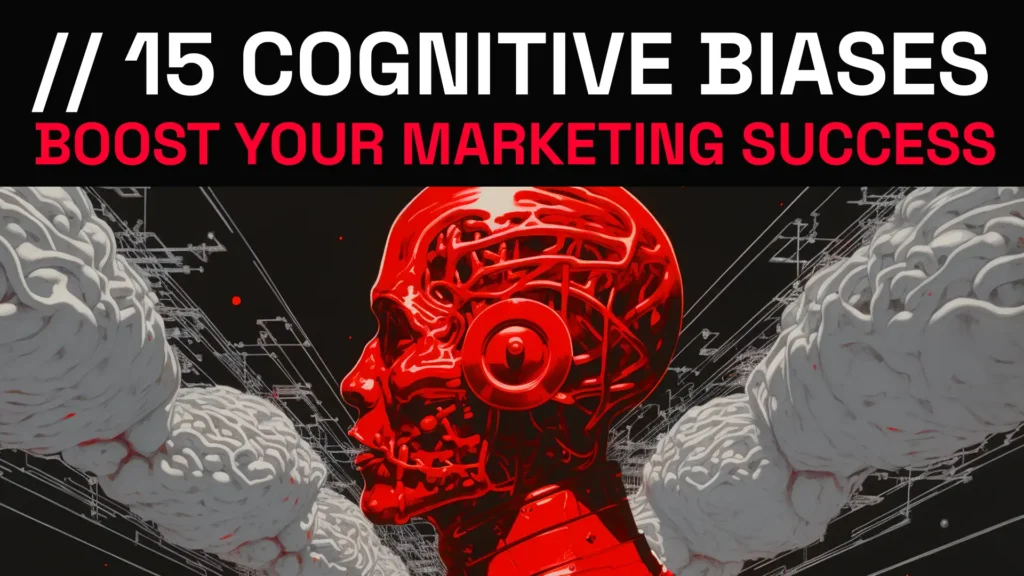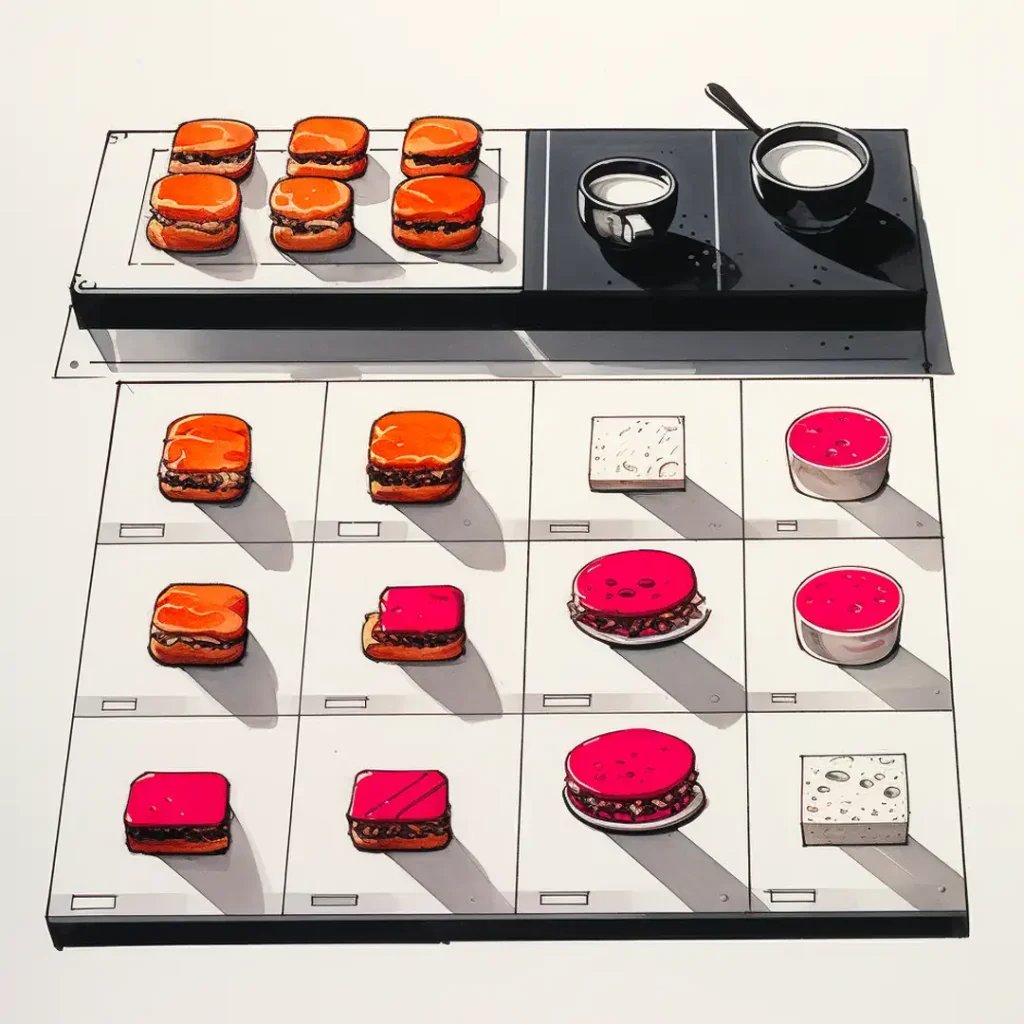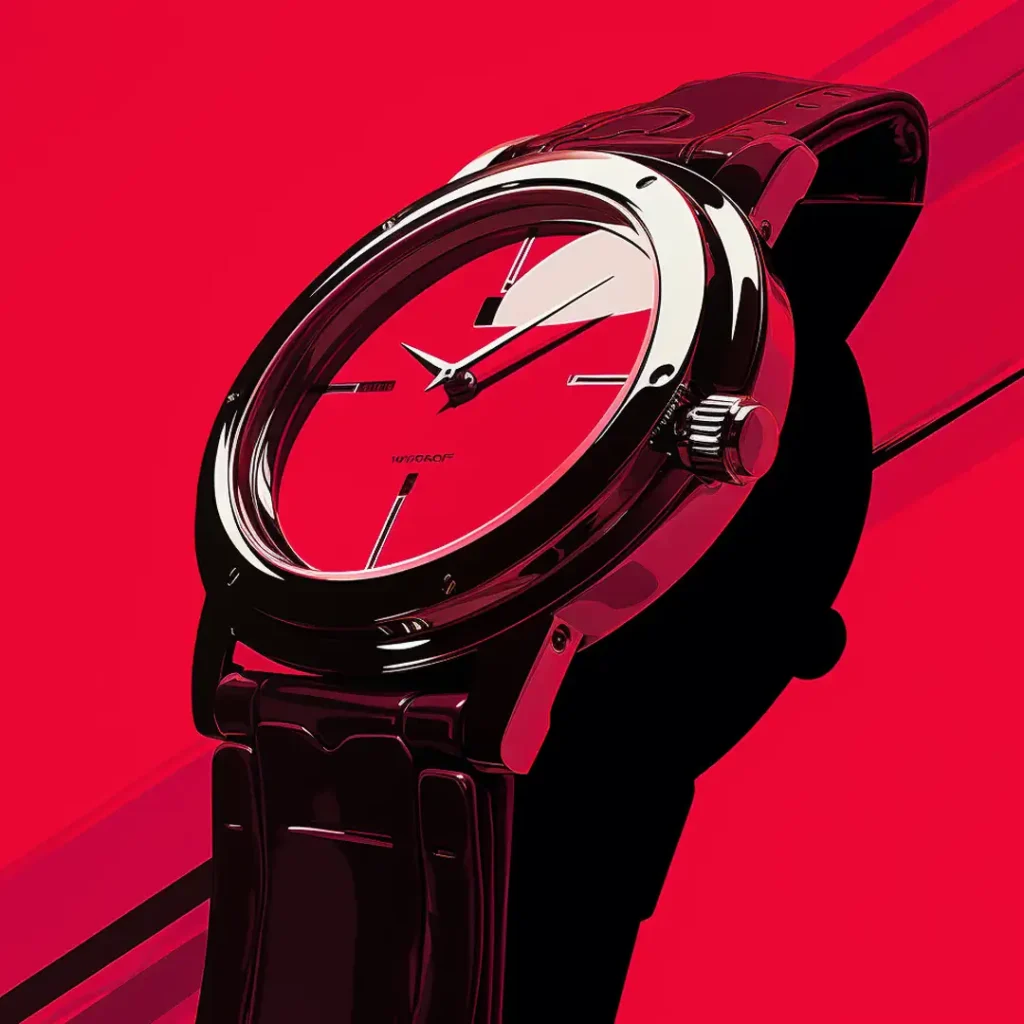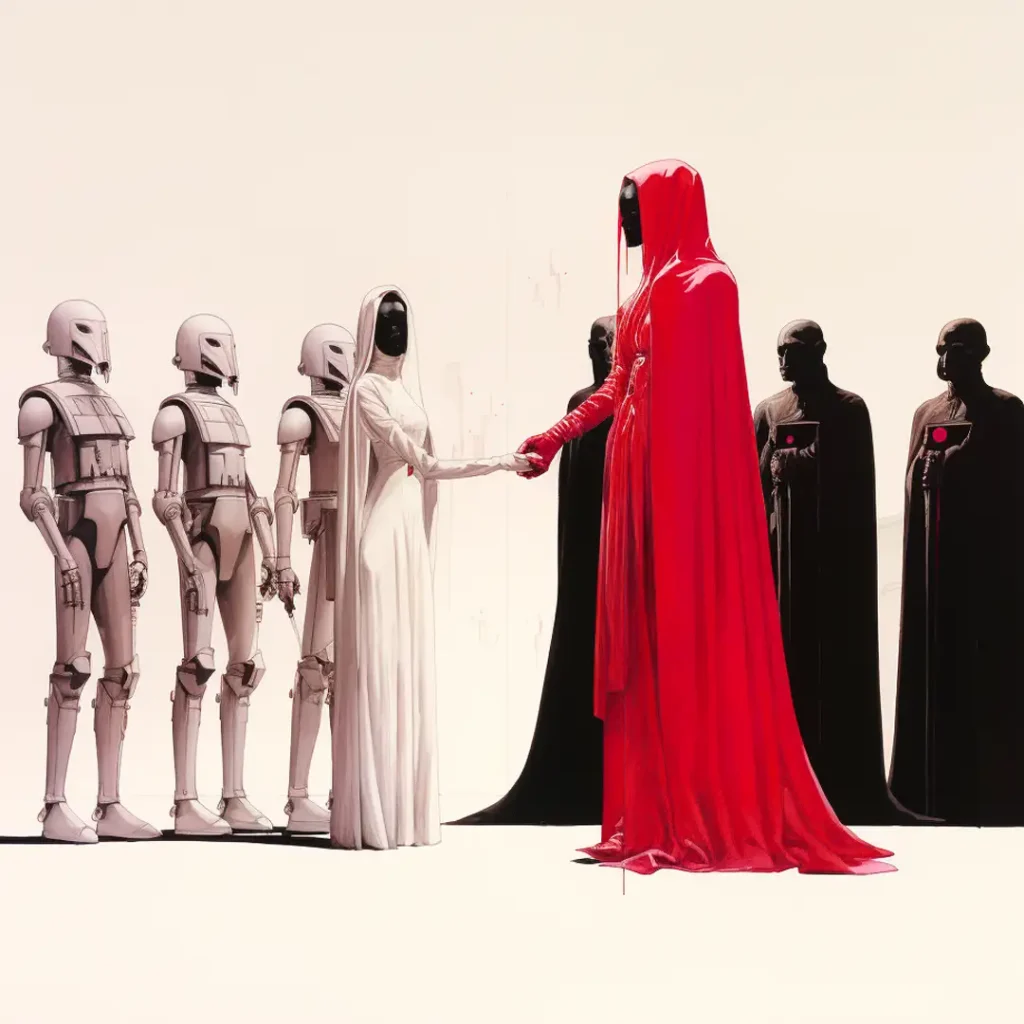TAKE YOUR BUSINESS TO THE NEXT LEVEL
Let us take marketing off your plate. Visit our pricing to learn more about working with Next Level.

As marketers, we’re always looking for ways to connect with our audience and influence their decisions. By understanding the cognitive biases that shape consumer behavior, we can create more effective campaigns and build stronger relationships with our customers.
In this article, we’ll explore 15 of the most powerful cognitive biases and how you can use them to take your marketing to the next level.
We rely heavily on the first piece of information we receive, which becomes an “anchor” for subsequent judgments. Businesses can utilize this by displaying a high “regular” price next to a lower sale price, establishing the initial price as a reference point. For example, a clothing store might show a jacket’s original price of $200 next to a sale price of $100, making the discounted price seem more attractive in comparison.
We overestimate the importance of information that comes to mind quickly, such as vivid or emotionally charged events.
Make your brand memorable by using striking examples, customer stories, and impressive statistics in your marketing materials.
A car company might highlight a customer’s story of how their car’s safety features saved their life during an accident, making the brand’s commitment to safety more memorable and impactful.

We seek out and interpret information in a way that confirms our existing beliefs while ignoring contradictory evidence. Align your messaging with your target audience’s values and beliefs to resonate with them more effectively.
For instance, a sustainable fashion brand might highlight its eco-friendly practices and materials to appeal to environmentally conscious consumers, reinforcing their beliefs about the importance of sustainability.

We feel the pain of losing something more intensely than the pleasure of gaining something of equal value.
Emphasize the potential losses customers could avoid by choosing your product or service, such as time, money, or opportunities.
A home security company might focus on the peace of mind and protection from theft that their system provides, highlighting the potential losses homeowners could face without proper security measures.
How information is presented or “framed” can significantly influence our decisions. Frame your messaging positively, focusing on the benefits, value, and potential gains associated with your offerings to make them more appealing. A gym might emphasize the health benefits, increased energy levels, and improved self-confidence that come with regular exercise, framing the experience in a positive light rather than focusing on the effort required.
We have a strong preference for things to stay the same and often stick with what we know, even when better options are available.
Emphasize the ease, familiarity, and reliability of your brand while addressing the potential uncertainties or risks associated with switching to a competitor.
A software company might highlight its user-friendly interface, seamless integration with existing tools, and exceptional customer support to make sticking with their product the most comfortable and reliable choice.

We often adopt beliefs, behaviors, or trends because many other people are doing the same, even if it goes against our personal judgments. Use social proof and highlight your brand’s popularity, such as user numbers or positive reviews, to encourage people to join the crowd. A restaurant might display glowing reviews from satisfied customers, mention its popularity among locals, or showcase its social media following to attract new patrons who want to experience what others are raving about.

We tend to place a higher value on things we own or feel a sense of ownership over, compared to things we don’t possess.
Offer free trials, samples, or personalized experiences to create a sense of ownership and increase the perceived value of your product or service.
A subscription-based service might offer a free trial period, allowing potential customers to experience the benefits firsthand and develop a sense of ownership, making them more likely to subscribe after the trial ends.
Our overall positive impression of a person, brand, or product can influence how we feel about its specific traits or offerings, even if they are unrelated. Build a strong, positive brand reputation that can carry over to all your offerings, creating a “halo” of positivity. A well-respected electronics brand known for its high-quality smartphones might launch a new line of smartwatches, benefiting from the positive reputation it has already established and making consumers more likely to view the new products favorably.
We tend to place a higher value on things that are rare, exclusive, or difficult to obtain. Use limited-time offers, exclusive deals, or waitlists to create a sense of urgency and desire around your products or services.
A luxury watch brand might release a limited-edition timepiece, emphasizing its exclusivity and scarcity to drive up demand and perceived value among collectors and enthusiasts.

We tend to trust and follow the lead of credible, knowledgeable experts or authority figures in a given field. Leverage expert endorsements, certifications, or trust symbols to boost your brand’s credibility and influence consumer decisions. A skincare brand might feature endorsements from dermatologists, showcase clinical study results, or display certifications from respected industry organizations to establish its authority and trustworthiness in the minds of consumers.

We are more likely to choose an option when it is presented alongside a similar but less attractive alternative, known as a “decoy.”
Carefully design your pricing and product tiers to nudge customers toward your preferred options by including a less appealing decoy.
A software company might offer three subscription plans: a basic plan with limited features, a premium plan with all features at a high price, and a “best value” middle-tier plan that offers most of the premium features at a more reasonable price, making it appear more attractive in comparison.
We tend to favor, trust, and prefer people who are similar to us or belong to the same social groups as we do. Use targeted messaging and imagery that reflects your audience’s identities, values, and experiences to create a sense of belonging and connection. A university might showcase successful alumni from various backgrounds, highlight student organizations and communities, and emphasize its inclusive campus culture to appeal to a diverse range of prospective students who are seeking a sense of belonging.
We tend to develop a preference for things simply because we are familiar with them, even if we have no other reason to like them.
Consistently show up where your audience is and maintain a strong, visible brand presence over time to increase familiarity and liking.
A local coffee shop might sponsor community events, partner with other local businesses, and maintain an active social media presence to increase its visibility and familiarity among residents, leading to increased liking and patronage.

We are more likely to notice, remember, and dwell on negative experiences or information than positive ones, even if they are of equal intensity. Proactively address potential concerns, provide exceptional customer service, and quickly resolve any negative experiences to minimize their impact on your brand reputation. An airline might go above and beyond to resolve customer complaints, offer compensation for inconveniences, and follow up with affected passengers to ensure their concerns are addressed, turning potentially negative experiences into positive ones that showcase the brand’s commitment to customer satisfaction.
By understanding and applying these cognitive biases, you can create marketing campaigns that truly resonate with your audience and drive real results. Just remember to use these powerful tools ethically and always prioritize creating genuine value for your customers. With a little creativity and a lot of empathy, you can harness the power of behavioral economics to build a stronger, more successful brand.
Let us take marketing off your plate. Visit our pricing to learn more about working with Next Level.